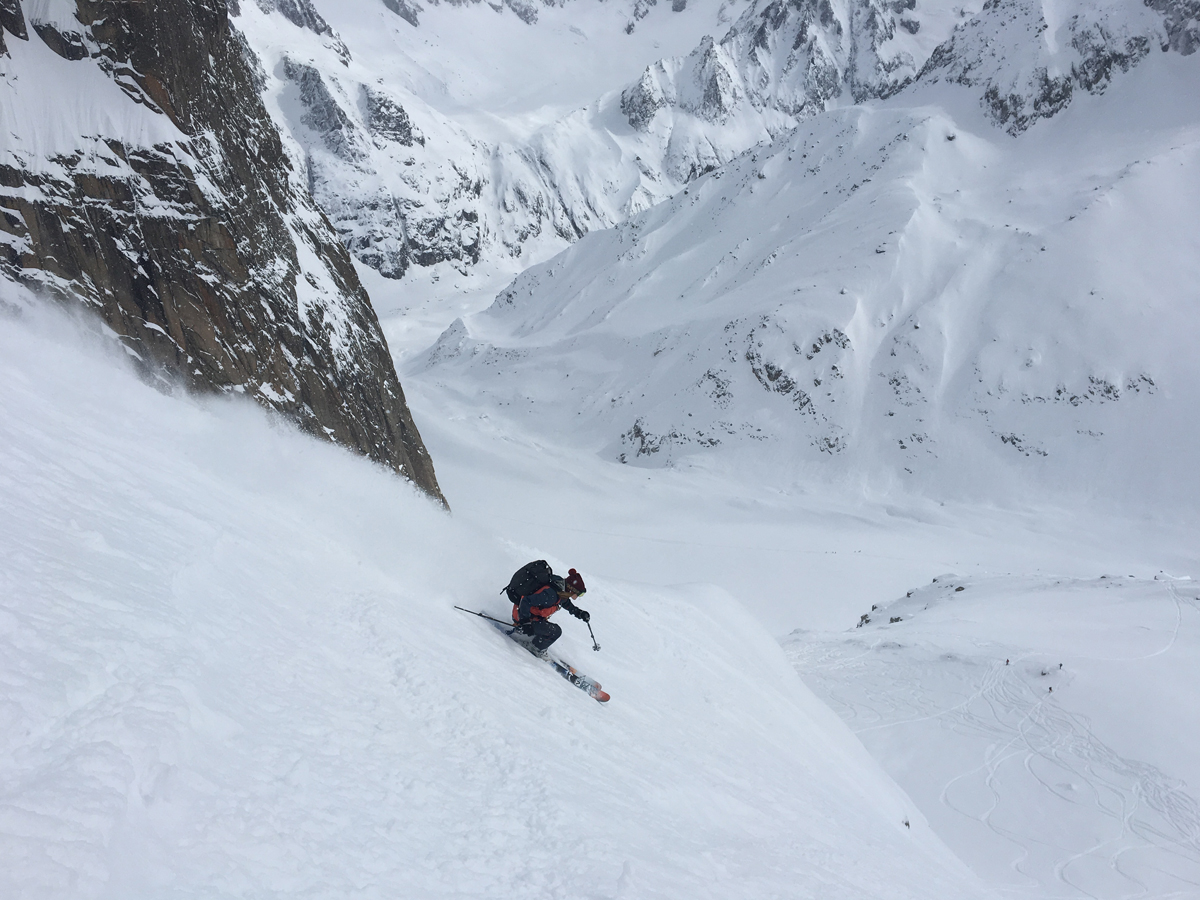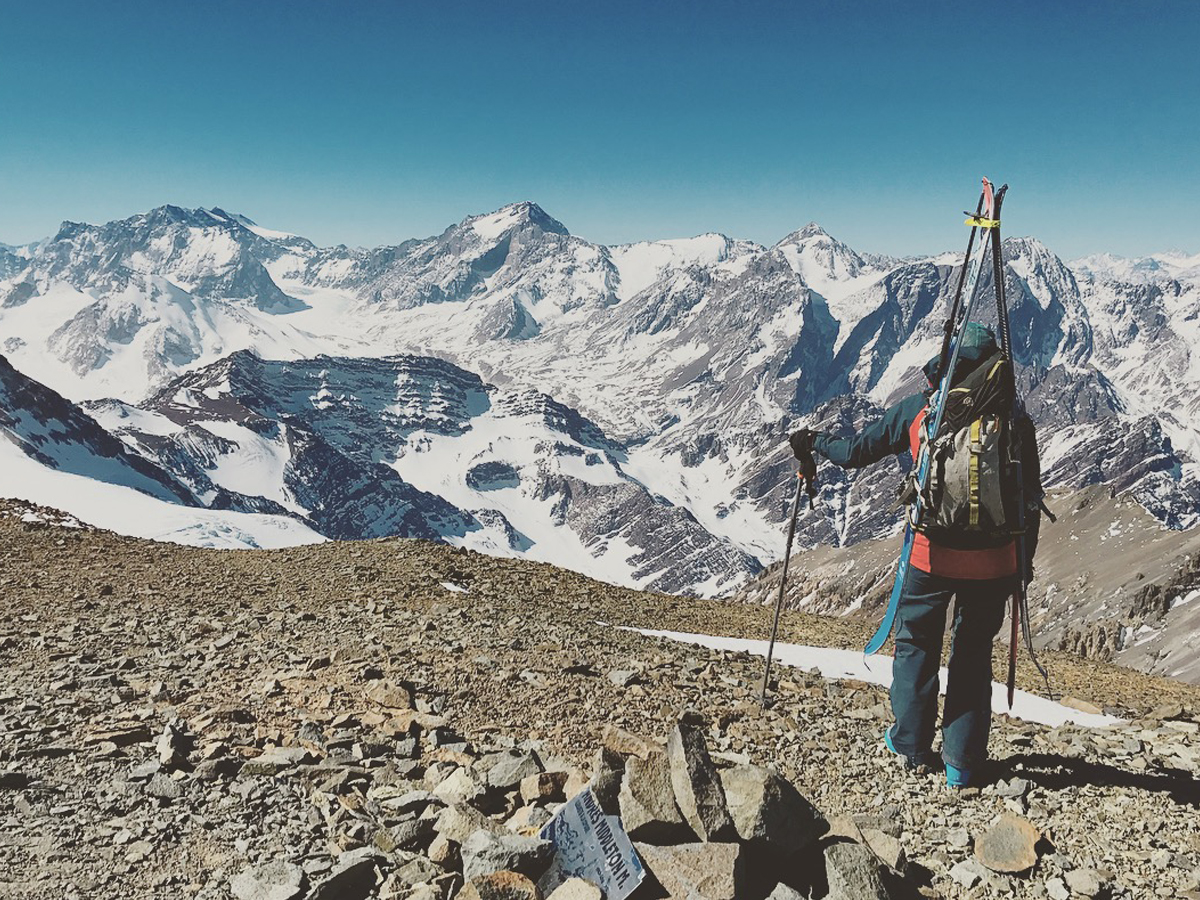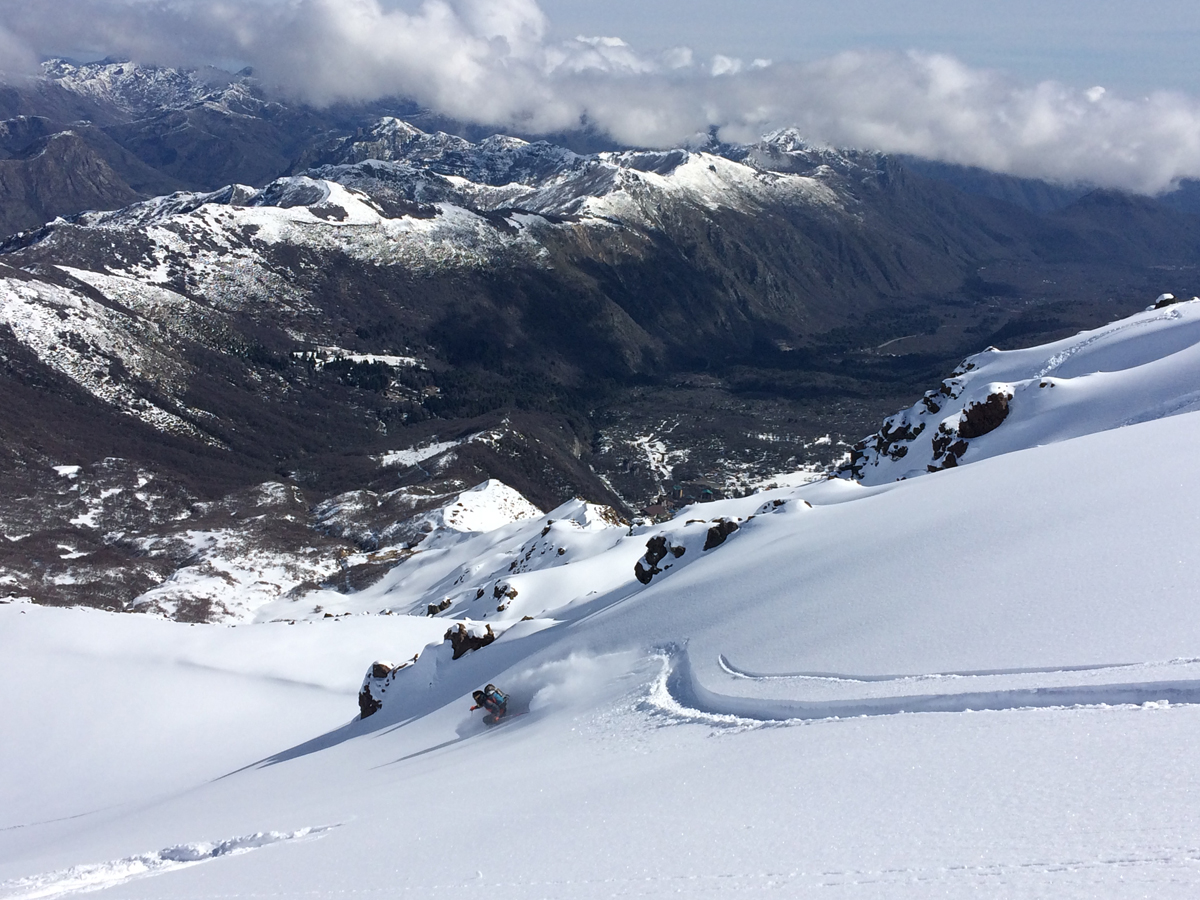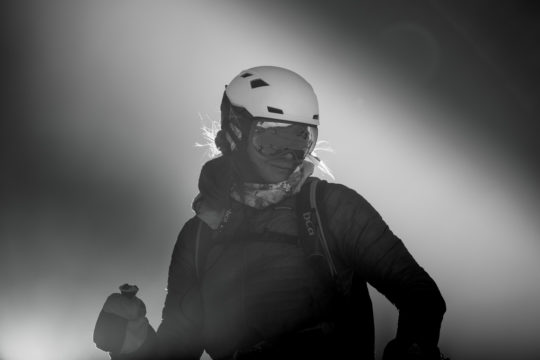As the founder of the South American Beacon Project, Alex Taran is equipping the Southern Hemisphere with necessary avalanche gear and rescue training, one beacon at a time.
WORDS • ERIN SPONG
You may know her as Big Al, ShitShow or, maybe, if you’re a Spanish-speaking native of the Southern Hemisphere, Princessa. Alex Taran is the founder of the South American Beacon Project and a woman with many nicknames: A testament to the impact she leaves on just about every human she encounters. Born in Montreal, Quebec, Canada, Taran has been a fanatic skier since she first learned how to slide on snow in her childhood front yard. When she was eight, her family moved to California and Taran joined the Mighty Mites kids ski program at Squaw Valley, where skiing became the launching pad for her life’s trajectory.
A born-to-be-wild child, Taran had a few turbulent teenage years, dropping out of high school at one point to pursue political activism.
“I was a punk, I was a really politically active punk and just kind of lost track of what made me happy,” says Taran.
But at 16, a “rude wakeup call,” as Taran puts it, opened her eyes to the bigger picture in life and what was truly important to her.
“I realized the most positive changes in the world came from grassroot movements based on love, so I returned to the mountains and returned to skiing,” says Taran. “I really love skiing, it’s the thing that really makes me feel alive and sets me straight more than anything.“

Taran re-enrolled in high school, graduated and continued her education at Prescott College in Arizona, where she channeled her activism energy into environmentalism and sustainability. While remotely earning her bachelor’s degree in sustainable community development, Taran joined Snowbird’s ski patrol in Utah, where–after a few mornings of near-tram misses and a reputation for not washing her hair–she garnered the charming alias ‘ShitShow.’
“Not anymore, I’ve tightened my ship severely, but at the time, as a wide-eyed 19-year-old, I was a bit of a shit show,” laughs Taran. “It’s totally endearing.”
After two years patrolling at Snowbird, Taran grew into the next phase of her skiing career at Ruby Mountain Heli-Skiing in Nevada, where she guided for a season before becoming an avalanche forecaster for Idaho’s Department of Transportation for two years. In 2008, a relentless yearning for an endless winter–and a Chilean boyfriend she met in Utah–led Taran to Chile to ski patrol for the Southern Hemisphere’s winter. She hasn’t missed a season down south since.

“I’ve patrolled at La Parva and Nevados de Chillan, I’ve spent five years guiding for CASA Tours, which is all over Chile [and Argentina], and I was competing down there in the Freeskiing World Tour,” Taran mentions nonchalantly.
On her first backcountry tour in the South American winter oasis, Taran hit the skin track with her boyfriend and two other friends—just a group of four on an out-and-back mission. But by the time she and her team reached the summit of the Santa Teresita face–named after one of Chile’s patron saints, Santa Teresa de Los Andes–the number of people standing on top of this 2,000-foot avalanche zone next to Valle Nevado Ski Resort was up to 10.
“Chileans are so friendly, so every person [one of our friends] knew along the way, they invited to come with us.”
Not only was the large group creating an unwanted hazard, the lack of preparedness for and regard to avalanches was incredibly alarming to the skillfully trained skier.
“There were 10 of us and most people did not have a beacon, shovel or probe,” says Taran. “I turned to one of my friends, it had just snowed 50 centimeters, and was like, ‘People don’t have any gear.’ He looked at me and said ‘Gringa, tranquilo, no tenemos avalancha.’”
For all you non-Spanish speakers, that translates to ‘Gringa, chill out, we don’t have avalanches.’
Later that season, an avalanche took out the road that connects the town of Farellones to Valle Nevado, locking people in on either side of the debris for two and a half days and killing one person. When Taran started ski patrolling in Chile, she was quick to notice an interesting and unsettling trend: There weren’t enough beacons for the number of patrollers on her team, which would have been unheard of, and not tolerated, back in Little Cottonwood Canyon, Utah.
“It was really eye-opening to me that there was just no knowledge of the hazard of avalanches,” says Taran. “People didn’t believe that they happened in Chile, even though they did.”

That’s when Taran’s teenage activism instincts kicked in. While hitchhiking in the bed of a pickup truck, inspecting her line for the Chilean Freeskiing Championships under that same Santa Teresita avalanche zone, she had the idea of creating a system to bring beacons, other avalanche equipment and proper education down from North America.
In 2011, Taran founded the South American Beacon Project, a non-profit organization dedicated to equipping and educating patrollers and rescue teams for safe and successful avalanche rescue missions. In her first year, Taran handed out five beacons–as many as she was able to collect that season–and started teaching classes to educate local patrollers on how to use them. “At first, people weren’t really receptive to the classes,” explains Taran. “There’s been a curve over the past seven, now eight, years. People are realizing avalanches are a problem and they apply to them.”

Is it a coincidence that curve took shape over the same amount of time the South American Beacon Project has existed? Doubtful. Since the project’s inception, Taran and her small team of volunteers have collected 300-plus beacons and donated them to over twenty mountain communities throughout Argentina and Chile. This past year, the organization was able to donate a fleet of beacons to a group in Ecuador that is starting an American Institute for Avalanche Research and Education (AIARE) certified avalanche course. With no affiliation to any specific avalanche course or group, the South American Beacon Project aims to foster an environment of broader avalanche awareness.
“We work with ski patrollers probably more than anybody, but we work with park rangers, leaders for alpine clubs, we work with police officers, plow drivers, government-sponsored volunteer alpine rescue organizations, the occasional military folks, all types of people,” says Taran.
Beacons and other avalanche gear, including shovels, probes and airbag packs are all collected through donation. While individuals are more than welcome to send in their old, still-functional gear, the largest donations come from ski patrol and other organizations changing out their fleets. Before bringing the gear down to groups in South America, Taran tests every single beacon herself to make sure it works.
“We don’t want to be giving beacons to people down there that don’t work,” says Taran. “This is meant to save someone’s life and, if it doesn’t function properly, that could be a fatal mistake.”
Along with donating the avalanche gear, the South American Beacon Project requires every group that receives a fleet of beacons to take a six-hour avalanche training clinic to learn how to use the equipment in rescue situations.
“We’re not digging snow pits and looking at snow crystals, we don’t have time for that. We’re focusing on things that they can use now. Talking about how weather and terrain affects avalanches and focusing, mainly, on rescue because most of them are rescuers.”

Because the South American Beacon Project runs solely off of donations, all of the courses are taught by Taran and other generous volunteers, including Sean Zimmerman-Wall and Justin Lozier of Patagonia Ski Tours. A lot of times, Taran will find herself hitchhiking to get to classes on time, sleeping in employee housing of ski resorts or the concrete floors of snow cat garages. To Taran, these are just small sacrifices compared to the greater impact she’s able to instigate through the program.
“It has not been glorious all the time and I think sometimes when I’m working on logistics and getting beacons down there and organizing classes, doing this and doing that, I forget how this project has linked me to so many communities,” Taran says over the phone with an audible smile. “I’ve made friends who are like brothers and ten years later they’re still like brothers.”
Nowadays, Taran continues to head the South American Beacon Project as she evolves into the next phase of her life: college, round two. With the desire to help people acting as a guiding light in her life’s path, the 32-year-old ex-ski patroller and guide is attacking life in reverse and working toward medical school.

“It was actually a really hard experience to leave that [skiing] lifestyle. I thought skiing was the end all, be all. But it turns out, I think I’m capable of a lot more than I thought I was capable of. So, I’m doing it in reverse, I’m going back to school with a bunch of kids who are younger than me,” laughs Taran. “I really admire humans who help other humans out and healthcare seems like a good way to do it.”
In its eighth year, the South American Beacon Project is gearing up for another season down south and the organization is currently collecting beacons–digital only, please– shovels, probes and airbag packs to take to Chile in September. To learn more about the project and to donate your old gear for a good cause, click here.
